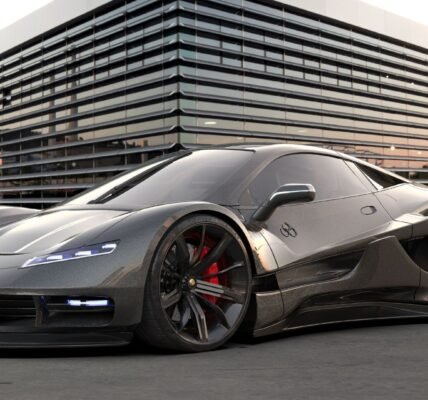The auto industry is advancing at a rapid pace. Each year brings new technologies and updates that redefine our driving experience. In this blog, we explore the key auto updates of the year that are shaping the future of transportation. From electric vehicles to enhanced safety systems, these innovations are transforming the way we drive. With a focus on efficiency, connectivity, and sustainability, the latest auto updates show us what’s coming next.
Electric Vehicles on the Rise
Electric vehicles (EVs) continue to make headlines. As a leading auto update of the year, EVs are seeing advancements in range, affordability, and accessibility. Major brands like Tesla, Ford, and Nissan are releasing models that appeal to a broader market. New battery technology is also allowing EVs to travel longer distances on a single charge. This development eliminates “range anxiety,” making EVs a more practical choice for daily commuting and long trips.
Another exciting update is the rapid expansion of charging infrastructure. Companies are investing in fast-charging stations across urban and rural areas. This network is essential for EV adoption, as drivers need reliable access to charging options. EVs are no longer just an eco-friendly option; they are a viable alternative to traditional vehicles. By year-end, EVs could account for a significant share of the market.
Safety Technologies to Protect Drivers and Pedestrians
Safety remains a top priority for automakers, and the key auto updates of the year reflect this focus. Advanced safety features are now standard in most new vehicles, helping drivers avoid accidents and stay safe on the road. Automatic emergency braking, lane-keeping assist, and adaptive cruise control are just a few of the high-tech features available in today’s cars.
Some automakers are pushing safety technology even further. For instance, pedestrian detection systems now identify people near crosswalks, warning drivers and taking action if necessary. Night vision and blind-spot monitoring add extra layers of protection, especially in low-visibility conditions. These technologies represent a shift towards autonomous safety, where the vehicle anticipates hazards and reacts in real-time.
Autonomous Driving Capabilities Evolve
Autonomous driving is another significant auto update of the yearSelf-driving technology is progressing steadily, with features that allow for hands-free driving under certain conditions. Tesla, Waymo, and other companies are at the forefront of this innovation, releasing semi-autonomous systems for highways and city driving.
This year, some vehicles now come with self-parking capabilities and traffic jam assist. In these scenarios, the car can manage speed, steering, and braking in heavy traffic, relieving drivers of the stress of stop-and-go driving. The journey towards fully autonomous vehicles is still ongoing, but this year’s advancements bring us one step closer to a future where cars can drive themselves safely and efficiently.
Enhanced Connectivity and Smart Features
One of the most transformative auto updates of the year is connectivity. Smart car technology allows vehicles to connect to smartphones, the internet, and each other. This connectivity improves the driving experience, offering drivers real-time traffic updates, navigation assistance, and emergency alerts. Smart systems can also perform diagnostics, helping drivers monitor their vehicle’s performance and schedule maintenance.
Beyond these features, the latest connected cars integrate with smart home devices, allowing drivers to control home security, lighting, and temperature from their vehicle’s dashboard. Some models even offer over-the-air (OTA) updates, which let automakers update software remotely. This feature keeps the car’s technology current, without the need for a dealership visit.
Sustainable Materials in Vehicle Design
Sustainability is an essential consideration in modern car design. Automakers are increasingly using eco-friendly materials, representing another key auto update of the year. Recycled plastics, organic fibers, and plant-based materials are becoming common in interiors, reducing the environmental impact of car manufacturing.
For example, Ford and BMW use recycled materials for seats, dashboards, and trims. Some brands are even developing biodegradable parts that break down naturally when disposed of. By integrating sustainable materials, the auto industry is showing its commitment to reducing waste and conserving resources. Consumers are noticing, too, as they seek eco-friendly vehicles that align with their values.
Hydrogen Fuel Cells: A New Power Source
While electric cars have dominated recent years, hydrogen fuel cells are an alternative power source gaining attention. This technology is a significant auto update of the year, offering a clean energy option with fast refueling times. Toyota and Hyundai have released hydrogen-powered models, which emit only water vapor, making them highly eco-friendly.
Hydrogen cars are especially beneficial for long-distance travel, as they refuel quickly, similar to gas-powered vehicles. While infrastructure for hydrogen is still limited, investment in refueling stations is on the rise. As hydrogen technology evolves, it could complement electric cars in the shift toward sustainable driving solutions.
Advanced Infotainment Systems for an Enhanced Driving Experience
Modern drivers expect high-quality entertainment and information on the road. Advanced infotainment systems are now standard, making them a key auto update of the year. These systems offer intuitive interfaces, touchscreen displays, and voice recognition, allowing drivers to control music, navigation, and communication without distraction.
Apple CarPlay, Android Auto, and built-in voice assistants like Amazon Alexa are popular features. They integrate seamlessly with smartphones, allowing drivers to access apps, make calls, and listen to audiobooks. Infotainment systems also support navigation with real-time updates, improving the driving experience by keeping drivers connected and informed.
Over-the-Air Software Updates
Over-the-air (OTA) updates are revolutionizing vehicle maintenance and software upgrades. They are a major auto update of the year, allowing manufacturers to enhance features, fix bugs, and even introduce new functionality without a service visit. Tesla pioneered this concept, but other automakers are adopting it rapidly.
OTA updates ensure that vehicles remain current with the latest software, offering consumers added value and security. For drivers, this means their car can improve over time. As OTA updates become more common, they will become a standard feature, adding longevity and flexibility to vehicles.
Innovations in Battery Technology
Battery technology is crucial for electric vehicle performance, and new advances in this area are among the key auto updates of the year. Solid-state batteries, for example, offer a safer, longer-lasting alternative to traditional lithium-ion batteries. This year, companies like Toyota and QuantumScape are testing these batteries, which could offer quicker charging and greater range.
Better battery technology makes electric vehicles more efficient and accessible. With longer ranges and faster charging, solid-state batteries could transform the EV market. By enhancing power storage, battery innovation will help EVs become the preferred choice for eco-conscious consumers.
Vehicle-to-Everything (V2X) Communication
Vehicle-to-Everything (V2X) communication allows cars to interact with each other and with infrastructure. This technology is a standout auto update of the year, providing drivers with alerts about traffic, road hazards, and weather conditions. V2X makes roads safer by enabling vehicles to “talk” to traffic lights, pedestrian crossings, and other cars, improving traffic flow.
Audi and Honda are testing V2X technology in city environments. With this system, cars will communicate seamlessly with the world around them, creating smarter, more efficient roads. As V2X develops, it will play a vital role in connected, autonomous transportation systems.
Conclusion: Embracing the Future of Driving
The key auto updates of the year showcase the industry’s commitment to innovation. Electric vehicles, safety features, connectivity, and sustainability are transforming driving. Each advancement brings us closer to a future where cars are smarter, safer, and more efficient.
These updates reflect changing consumer expectations and the industry’s dedication to progress. As we embrace these technologies, we are steering toward a greener, more connected future.





